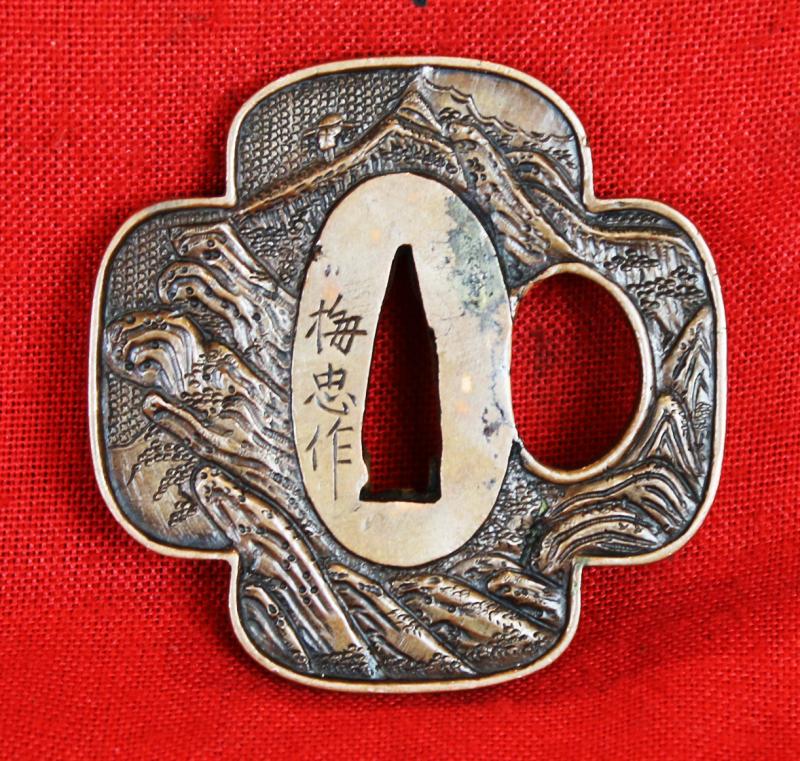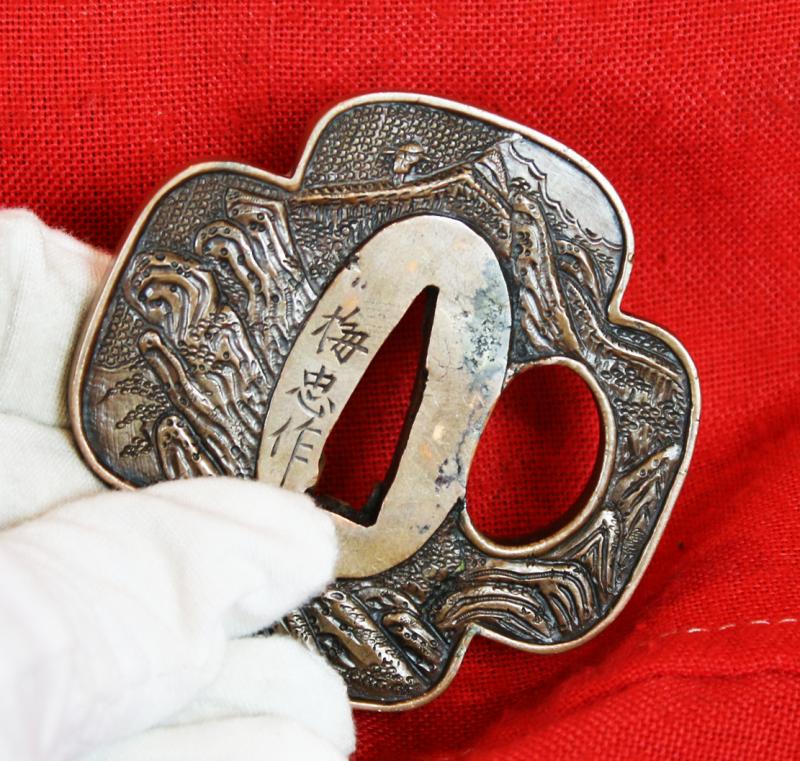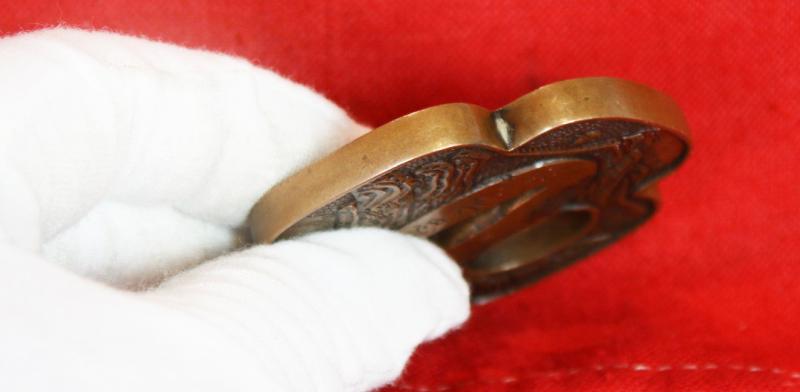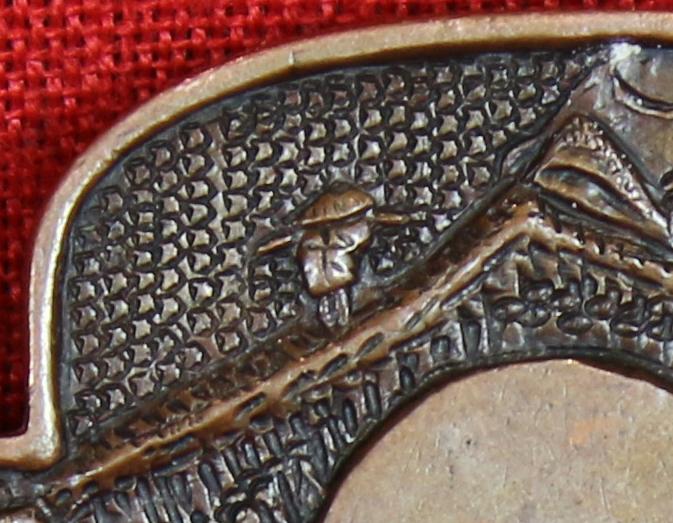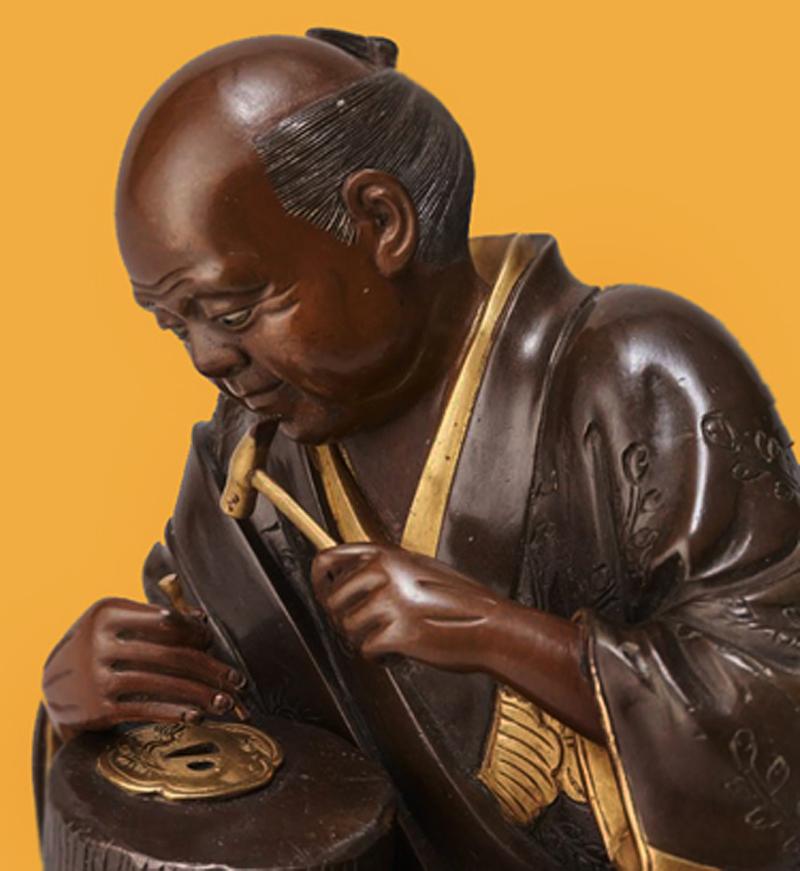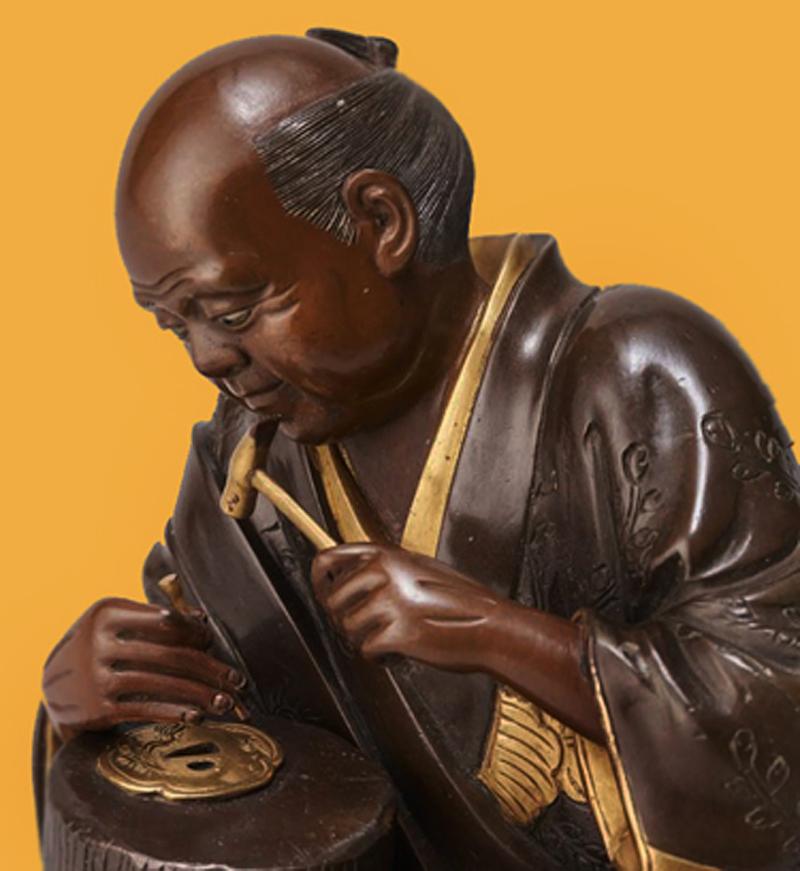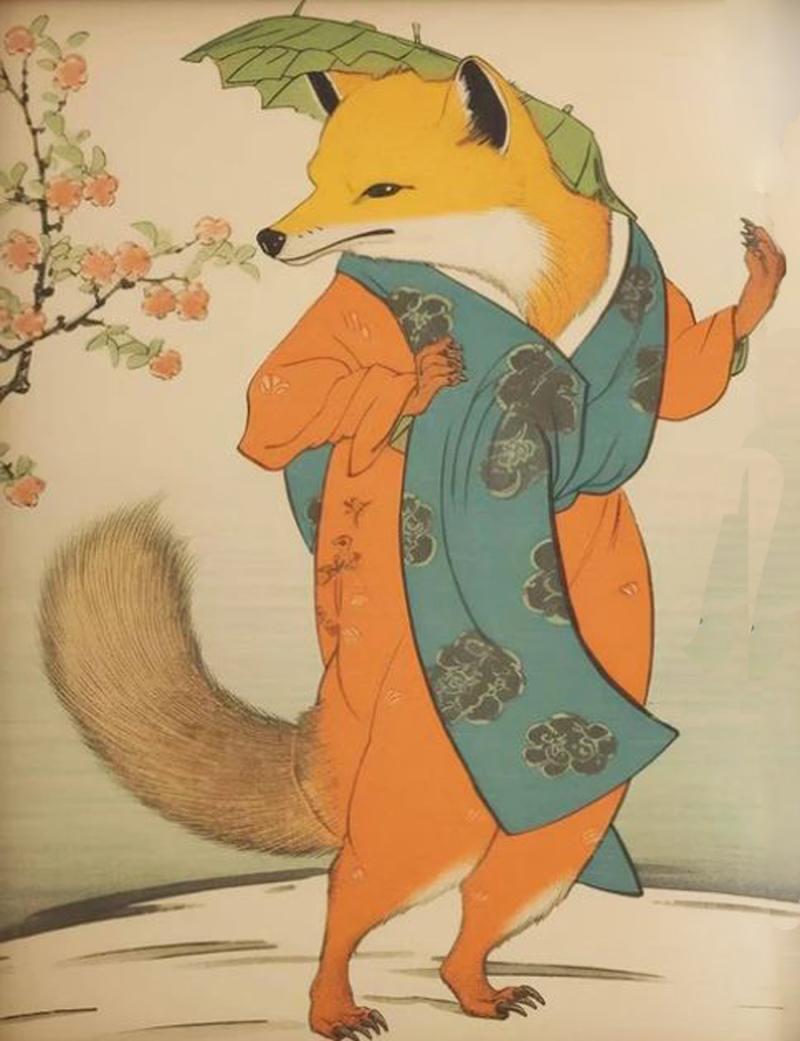A Superb Edo Period Umetada Tsuba Signed Yamashiro kuni ju Umetada Shigenari, From the Umetada Line Of Tsuba Makers of Yamashiro. Of A Carved Takebori Kitsune {Fox} Going To The Kitsune no Yomeiri {The Foxe's Wedding}
Yamashiro kuni ju Umetada shigenari, from the Umetada family residing in the province of Yamashiro, active around 1650-1700.
With a most rare feature of the punch in order to create a narrowing of the nakago-ana, bears numerous strikes of a clan mon of six plum blossom petals. At the area around the nakago-ana note there are tagane-ato (punch marks around the nakago-ana) in the form of mon
The Umetada school was one of the pivotal centres of sword-related arts between the late Momoyama period and the early Edo era. Founded in Kyōto, it stood out for its versatility and outstanding quality, covering all fields associated with the katana: restorations, horimono, suriage, kinzogan-mei, crafting of habaki, and mountings — most of these works commissioned through collaboration with the Hon’ami family, who retained exclusive rights for polishing and appraisal services.
The Umetada school was a renowned family of tsuba (sword guard) makers in Kyoto, founded in the late 16th century by Umetada Myōju. The school is known for its innovative combination of chiseling and inlay work, creating tsuba with a wide variety of styles, including intricate designs, soft metal inlays, and even European-influenced motifs. Key members of the school included Umetada Myōju, Umetada Mitsutada, Myōshin, and Jusai.
Key features of the Umetada school
Innovative techniques: The school combined traditional chiseling and inlay (zogan) techniques with unique designs.
Versatile subject matter: Tsuba often featured natural motifs like snow crystals and leaves
Use of soft metals: They were known for using soft metals like copper and brass, often with inlays of gold, silver, or shakudo.
One the principle side is the fox dressed in formal garb with a hat with his iconic big fluffy tail, and at his feet is a bound bag of precious gifts. On the opposing side is a mountain scene with the small fox figure, carrying the bag of precious gifts on a pole, wearing a jingasa hat, walking the mountain path.
The Foxes' Wedding
is less a single continuous narrative and more a widespread folk belief used to explain a specific natural phenomenon: a sunshower, where rain falls while the sun is shining. People in rural Japan once believed this meant a kitsune wedding was taking place just beyond human sight.
On a day when the sun and rain appear together, an invisible (or nearly invisible) procession of foxes can be seen or heard moving through the fields or mountains.
The foxes in the procession, having used their magical abilities to take on human form, wear traditional Japanese wedding attire. The bride wears a white kimono (a bridal kimono) and a traditional headdress, while the groom may be in formal black attire. Other fox guests wear splendid kimonos with their family crests.
The groom in traditional formal wear would wear a traditional formal hat (like an eboshi or kanmuri), fitting the description of a "fox wearing a kimono and hat" in human form for the ceremony.
The procession is often lit by kitsunebi (fox-fire), ethereal fireballs breathed out by the foxes to light their way through the night.
Human Encounters: Humans who accidentally witnessed this rare event were traditionally warned to stay indoors to avoid disruption, which could bring bad luck. Sometimes, a human might stumble upon the wedding and either be granted good fortune or become bewitched if they spoke of it.
This belief is a popular motif in traditional Japanese art (ukiyo-e prints) and theatre, such as Kabuki, where actors would wear fox masks and elaborate costumes to portray the characters.
Code: 25966
995.00 GBP


